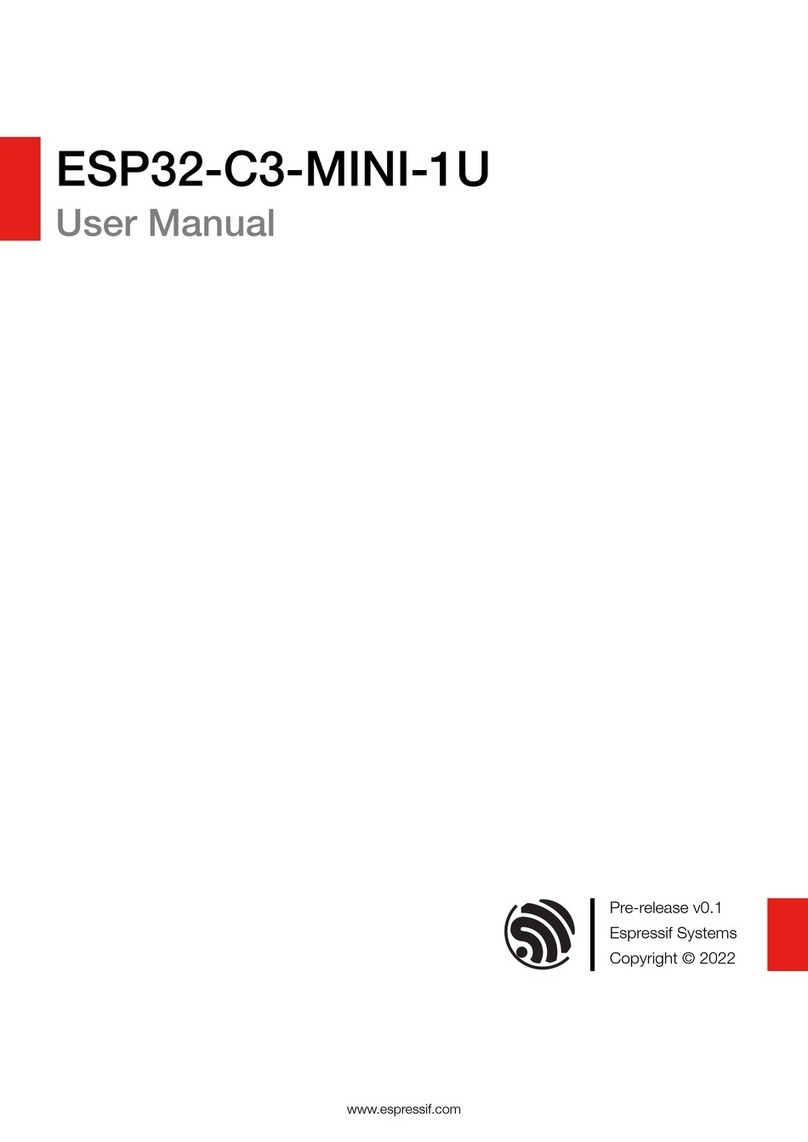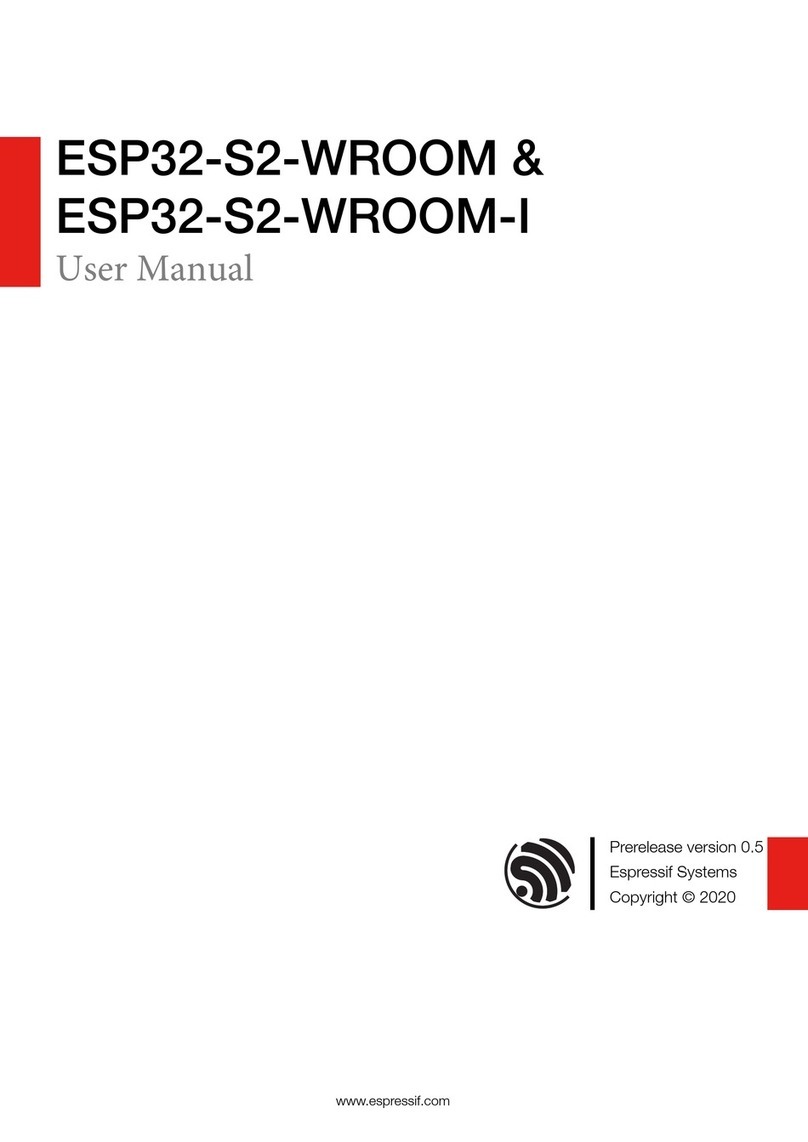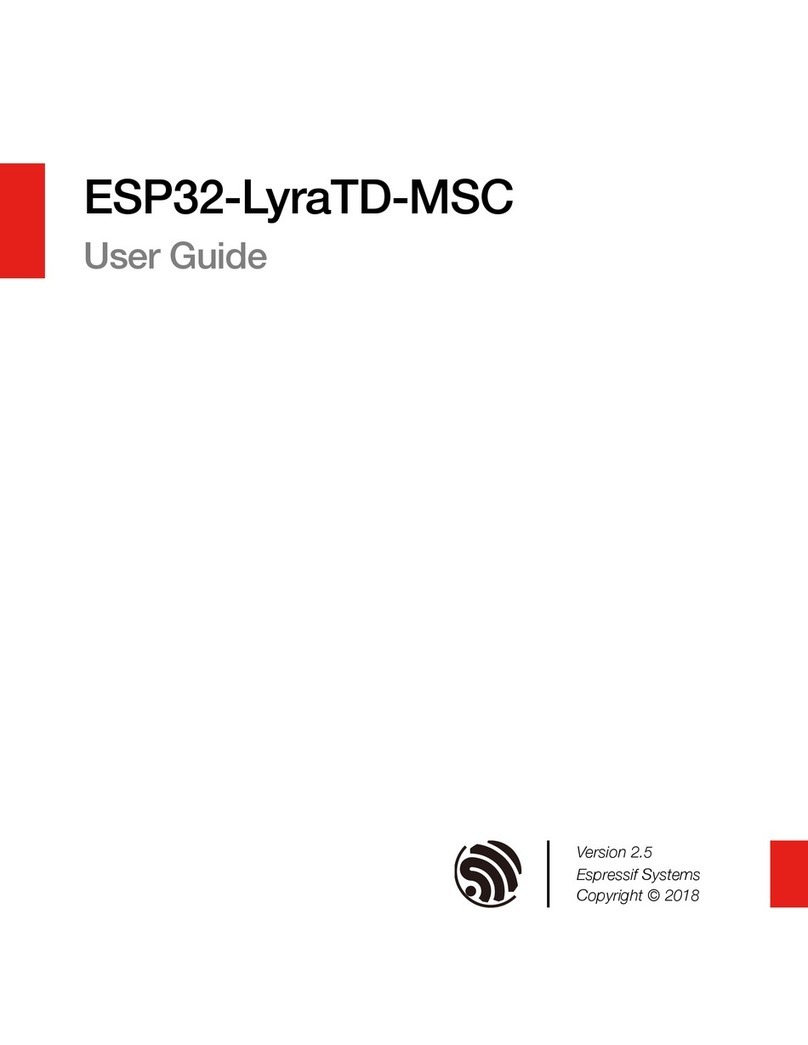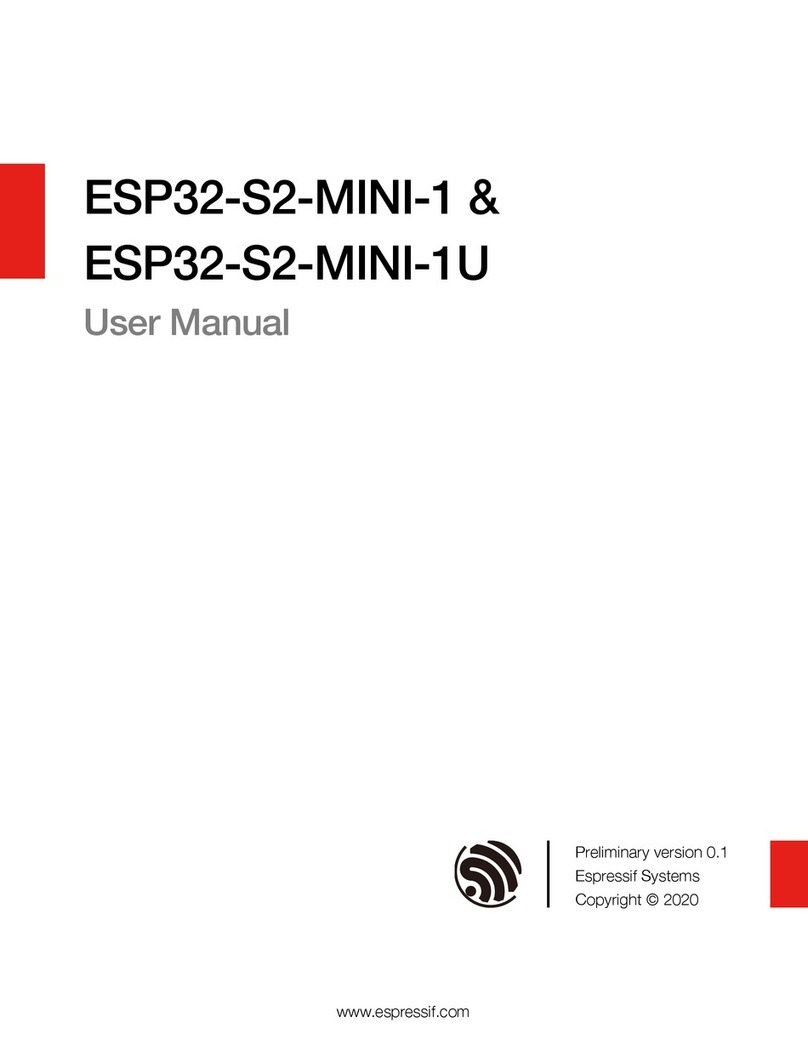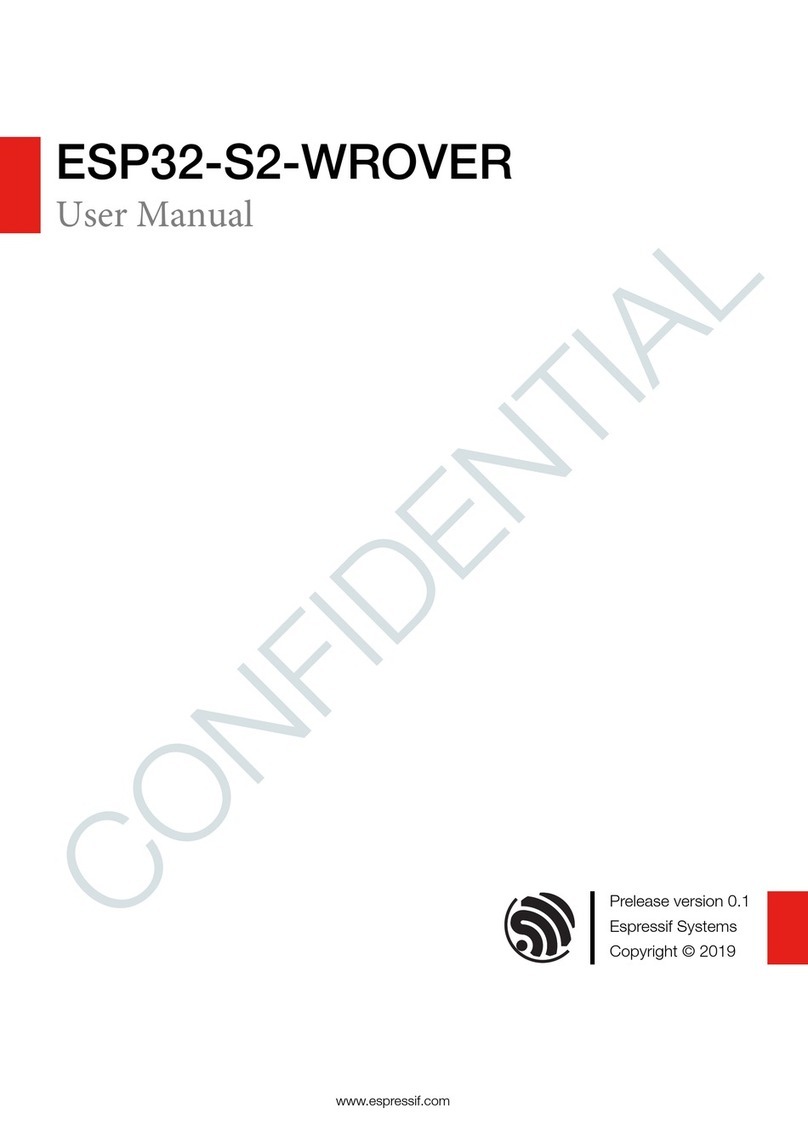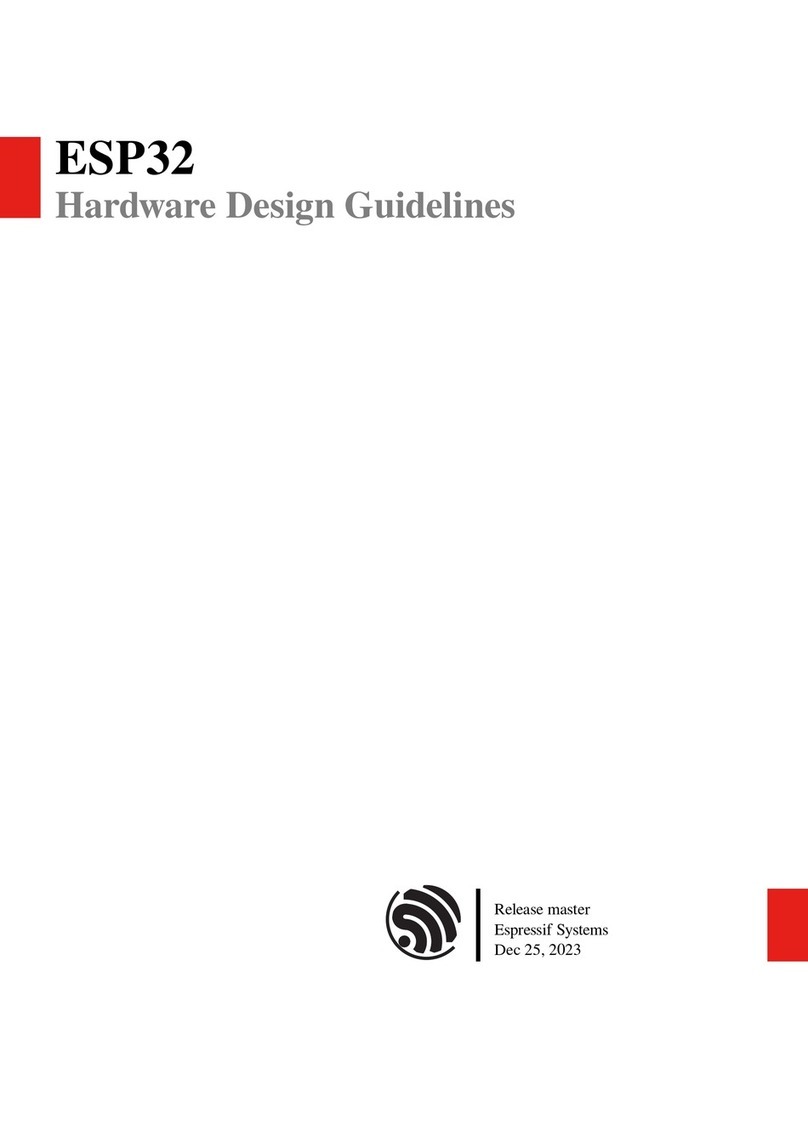
2 Schematic Checklist
the crystal and minimize the impact of crystal harmonics on RF performance, please add a series inductor (initially
of 24 nH) on the XTAL_P clock trace. Note that the accuracy of the selected crystal should be within ±10
ppm.
5
5
4
4
3
3
2
2
1
1
D D
C C
B B
A A
The values of C8, L2 and C9
vary with the a tual PCB board.
The values of C1 and C2 vary with
the sele tion of the rystal.
The value of R1 varies with the a tual
PCB board.
ESP8684-MINI-1(pin-out)
NC: No omponent. ESP8684H2
ESP8684H1
ESP8684H4
CHIP_EN
GPIO4
GPIO5
GPIO6
U0RXD
ANT
GPIO0
GPIO1
GPIO2
GPIO3
RF_ANT
U0TXD
GPIO2
GPIO3
CHIP_EN
GPIO1
GPIO0
GPIO10
GPIO6
GPIO7
GPIO8
GPIO9
GPIO18
U0RXD
U0TXD
GPIO4
GPIO5
GPIO7
GPIO8
GPIO9
GPIO10
GPIO18
GND
VDD33
GND
GNDGND GND
GND GND
GND
VDD33
GND GNDGND
VDD33
VDD33
GND
GND
GND
GND GND VDD33
GND
GND
Title
Size
Page Name Re v
Date: Sheet o f
Confidential and Proprietary
<02_ESP8684-MINI-1> V1.0
ESP8684-MINI-1
A4
2 2Friday, O tober 29, 2021
Title
Size
Page Name Re v
Date: Sheet o f
Confidential and Proprietary
<02_ESP8684-MINI-1> V1.0
ESP8684-MINI-1
A4
2 2Friday, O tober 29, 2021
Title
Size
Page Name Re v
Date: Sheet o f
Confidential and Proprietary
<02_ESP8684-MINI-1> V1.0
ESP8684-MINI-1
A4
2 2Friday, O tober 29, 2021
C1
TBD
R1 0(1%)
R2 499(1%)
Y1
40MHz
XIN
1
GND
2XOUT 3
GND 4
L1 2.0nH(0.1nH)
C9
TBD
U2
ANT
1
VDDA3P3
2
VDDA3P3
3
GPIO0
4
GPIO1
5
GPIO2
6
CHIP_EN
7
MTMS
9
MTDI
10
VDD3P3_RTC
11
MTCK
12
MTDO 13
GPIO8 14
GPIO9 15
GPIO10 16
VDD3P3_CPU 17
U0RXD 19
U0TXD 20
XTAL_N 22
XTAL_P 23
GND 25
GPIO3
8VDDA 24
VDDA 21
GPIO18 18
C6
0.1uF/6.3V(10%) D1
ESD
C3
1uF/6.3V(20%)
C4
10nF/6.3V(10%)
C10
0.1uF/6.3V(10%)
C7
0.1uF/6.3V(10%)
ANT1
PCB_ANT
1
2
U3
ESP8684-MINI-1
GND
1
3V3
3
IO9
23
NC
4
IO2
5
IO3
6
NC
7
NC
9
NC
10
NC
15
IO10
16
NC
17
IO4
18
IO5
19
NC 32
TXD0 31
RXD0 30
NC 34
NC 33
IO18 26
NC 29
NC 28
NC 27
IO7
21
IO8
22
IO0
12
IO1
13
GND
52
IO6
20
NC 35
NC
24
EPAD 49
GND
2
GND
53
GND 51
GND 50
EN
8
GND 36
GND 37
GND 38
GND 39
GND 40
GND 41
GND 42
GND 43
GND 44
GND 45
GND 46
GND 47
GND 48
GND
14
GND
11 NC 25
C2
TBD
C8
TBD
C12
0.1uF/6.3V(10%)
L2 TBD
C5
10uF/6.3V(20%)
Figure 5: Schematic for the Crystal
Oscillator
If an oscillator is used, its output should be connected to XTAL_P on the chip through a series inductor (a 20 nH
inductor can be used initially). XTAL_N can be floating. Make sure that the oscillator output is stable and its
accuracy is within ±10 ppm. It is recommended that the circuit design for the oscillator is compatible with the
crystal. In case of defects in the circuit design, you can still use the crystal. The circuit for the oscillator is shown
in Figure 6.
5
5
4
4
3
3
2
2
1
1
D D
C C
B B
A A
NC: No component.
The values of C8, L2 and C9
vary with the actual PCB board.
The values of C1 and C2 vary with
the selection of the crystal.
The value of R1 varies with the actual
PCB board.
If using ESP32-C3FN4 or ESP32-C3FH4,
flash is not mounted.
GPIO19
CHIP_EN
GPIO4
GPIO5
GPIO6
GPIO7
GPIO8
U0RXD
GPIO18
LNA_IN
GPIO9
GPIO10
GPIO0
GPIO1
SPICS0
SPID
SPIQ
SPICLK
SPIWP
SPIHDGPIO2
GPIO3
RF_ANT
U0TXD
SPICLK
SPICS0
SPIHD SPIWP
SPID
SPIQ
XTAL_P
GND
VDD33
GND
GND
GNDGND GND
GND GND
GND
VDD33
GND GNDGND
VDD33
VDD_SPI
VDD33
GND
VDD_SPI
GND
GND
GND GND
GND
VDD33
GND
C1
TBD
C9
TBD
R4 0
U3 FLASH-3V3
/CS
1
DO 2
/WP 3
GND
4
DI 5
CLK
6
/HOLD
7
VCC 8
L3 TBD
R7 0
R6 0
ANT1
PCB_ANT
1
2
R1 0
C12
0.1uF
C3
1uF
C10
0.1uF
R5 0
R1 0
R3 0
R2 499
C1
10nF
C8
TBD
C2
TBD
L1 2.0nH
C6
0.1uF
Y1
40MHz(±10ppm)
VCC
4
NC
1GND 2
OUT 3
C5
10uF
L2 TBD
C7
1uF
C4
10nF
U2 ESP32-C3
LNA_IN
1
VDD3P3
2
VDD3P3
3
XTAL_32K_P
4
XTAL_32K_N
5
GPIO2
6
CHIP_EN
7
MTMS
9
MTDI
10
VDD3P3_RTC
11
MTCK
12
MTDO
13
GPIO8
14
GPIO9
15
GPIO10
16
VDD3P3_CPU 17
VDD_SPI 18
SPIHD 19
SPIWP 20
SPICS0 21
SPICLK 22
SPID 23
SPIQ 24
U0RXD 27
U0TXD 28
XTAL_N 29
XTAL_P 30
GND 33
GPIO3
8
VDDA 32
VDDA 31
GPIO19 26
GPIO18 25
C11
1uF
R8
10K
U1
40MHz(±10ppm)
XIN
1
GND
2XOUT 3
GND 4
Figure 6: Schematic for the Oscillator
Notice:
Defects in the manufacturing of crystal and oscillators (for example, large frequency deviation of more than ±10 ppm,
unstable performance within operating temperature range, etc) may lead to the malfunction of ESP8684, resulting in a
decrease of the RF performance.
2.4.2 RTC (optional)
ESP8684 supports an external clock signal (e.g., an oscillator) input through GPIO0 to act as the RTC sleep
clock and the typical clock frequency is 32.768 kHz. The amplitude of the input clock signal should be the same
as the amplitude requirement of the GPIO input signal.
2.5 RF
Aπ-type matching network is essential for antenna matching in the circuit design. CLC structure is
recommended for the matching network. The parameters of the components in the matching network are
Espressif Systems 10
Submit Documentation Feedback
ESP8684 Series Hardware Design Guidelines v1.1
